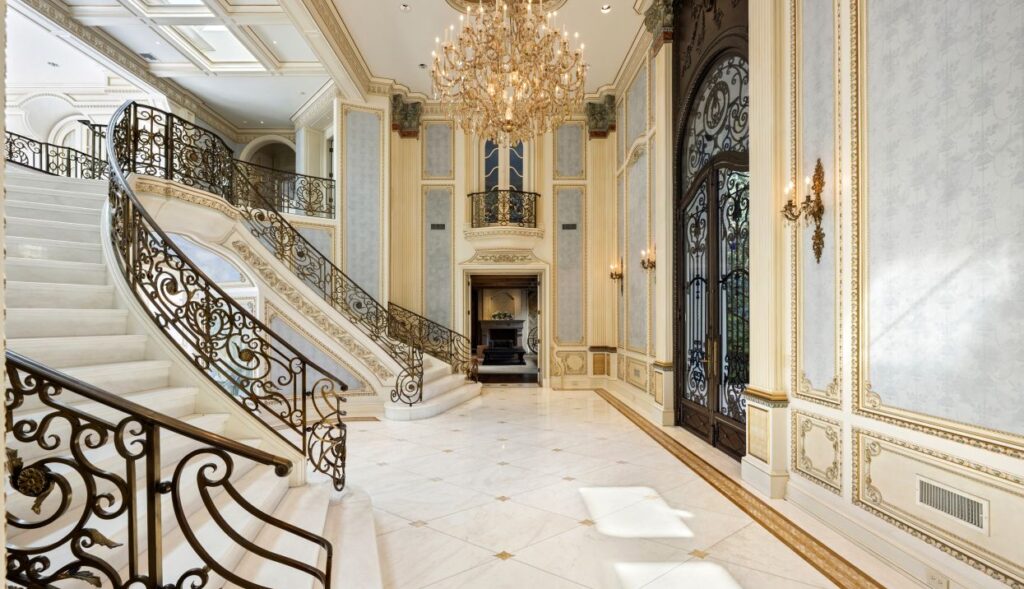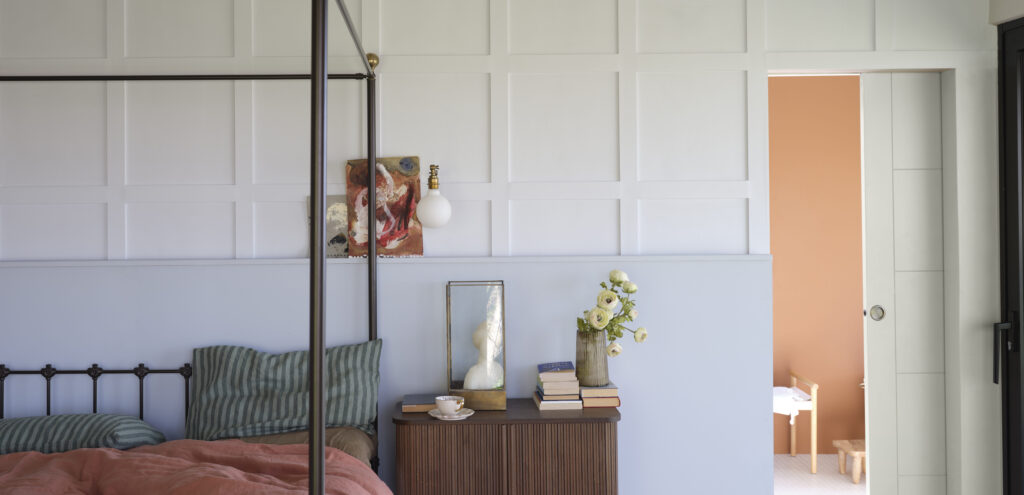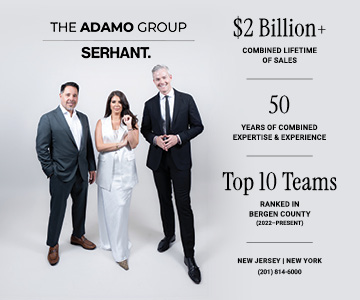McLaren began conquering racetracks around the world in the 1960s. Led by Bruce McLaren, the eponymous racing team has since won almost 200 Grands Prix. But it wasn’t until the 1990s that McLaren ventured to bring a supercar to market. That car was the McLaren F1, and it changed the way supercars were engineered.
This Spring, the first 2018 McLaren 720S rolled off the production line. With it came a promise to continue the supercar evolution that began with the legendary F1. What the 720S offers isn’t just brute speed, but finesse, refinement, and enough comfort and pragmatism to make it a daily car — should you choose to drive this $290,000 car every day.
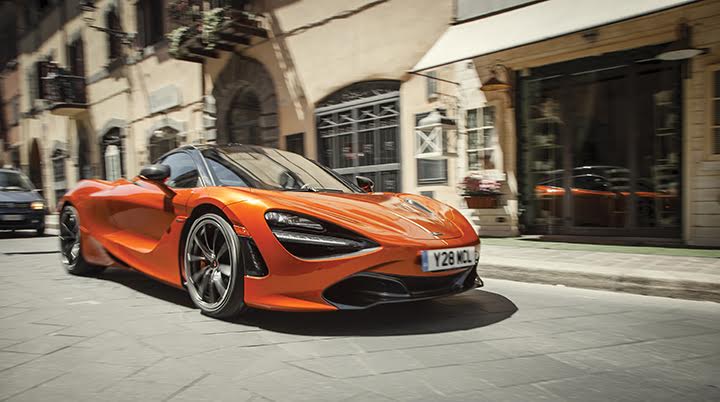 Like every McLaren supercar since the 1980s, the 720S is built around a carbon-fiber chassis. Using carbon-fiber, the lightweight composite material known for its strength, allows McLaren to achieve unmatched weight-power ratios. It isn’t just the chassis that’s carbon-fiber — beginning with the 650S, the predecessor to the 720S, McLaren developed the Monocage, a self-contained, carbon-fiber ‘tub’ that comprises the cab. For the 720S, McLaren re-engineered the Monocage II, extending it over the rear engine compartment. Portions of the Monocage II are exposed and lacquered, forming a teardrop-shaped roof that blends seamlessly into the back of the car.
Like every McLaren supercar since the 1980s, the 720S is built around a carbon-fiber chassis. Using carbon-fiber, the lightweight composite material known for its strength, allows McLaren to achieve unmatched weight-power ratios. It isn’t just the chassis that’s carbon-fiber — beginning with the 650S, the predecessor to the 720S, McLaren developed the Monocage, a self-contained, carbon-fiber ‘tub’ that comprises the cab. For the 720S, McLaren re-engineered the Monocage II, extending it over the rear engine compartment. Portions of the Monocage II are exposed and lacquered, forming a teardrop-shaped roof that blends seamlessly into the back of the car.
The 720S is the perfect ratio of neck-breaking speed and comfortable control. The supercar performs equally well on the racetrack as it does on city streets, thanks to McLaren’s Proactive Chassis Control and electro-hydraulic power-steering. Its new M480T engine, a twin-turbocharged V8, maxes at 212 mph and can rocket the 720S from 0-60mph in 2.8 seconds, and 0-124mph in less than 8 seconds.
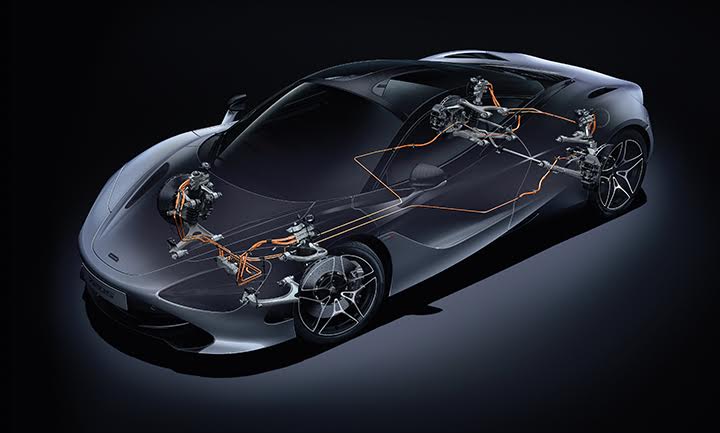 Don’t forget to break. The 720S, equipped with carbon-ceramic brake discs and redesigned, 6-piston callipers, can go from 124mph to a complete stop in 4 seconds, assisted by a full-width rear wing which automatically deploys as an airbrake to maintain vehicle stability under hard stops. The rear wing can also be used to improve downforce at high speeds, if the driver chooses the corresponding setting. This rear wing, or spoiler, is one of several aerodynamic features designed to increase downforce, including narrow channels behind the front wheels which redirect air coming from the wheel-wells.
Don’t forget to break. The 720S, equipped with carbon-ceramic brake discs and redesigned, 6-piston callipers, can go from 124mph to a complete stop in 4 seconds, assisted by a full-width rear wing which automatically deploys as an airbrake to maintain vehicle stability under hard stops. The rear wing can also be used to improve downforce at high speeds, if the driver chooses the corresponding setting. This rear wing, or spoiler, is one of several aerodynamic features designed to increase downforce, including narrow channels behind the front wheels which redirect air coming from the wheel-wells.
What McLaren ventured to create with the 720S, was a vehicle that focuses on driver experience. This becomes apparent the moment you settle into the driver’s seat; the dashboard controls, including the 8-inch infotainment screen (not too big, so the driver can focus on driving) are angled towards the driver. As the door opens, the driver display unfolds behind the steering-wheel and the infotainment system comes to life. The TFT/LCD driver display provides the standard information you would expect of any car, and the display can also fold back up to show only a tachometer and speedometer. This folded view provides only the minimum info a driver would need, especially when burning through RPMs on the racetrack. Which is why McLaren included a Track mode.
The 720S comes equipped with Active Dynamics which includes three separate modes to help the driver take full advantage of the vehicle’s capabilities in any situation. The modes include Comfort, Sport, and Track. The infotainment system will even track the vehicle’s telemetry to help the driver improve his/her skills, and the Variable Drift Control, with accelerometers for each wheel, makes drifting easier than parallel-parking.
To ensure the 720S benefits from unparalleled aerodynamics, McLaren has turned over yet another supercar paradigm — the 720S lacks side air-intakes. Instead, there are two pairs of air-intakes concealed just above the doors and beneath the headlights. Without large air-intakes on the sides, the aerodynamic grace of this supercar helps define its sleek, futuristic aesthetic.
 The interior of the 720S is surprisingly spacious, with ample room for the driver and passenger to stretch out. There is even baggage space behind the seats. The leather-lined interior, with solid-aluminum switches, provides an almost uninterrupted, 360-degree view, thanks again to the structural integrity of the Monocage II; the support beams are substantially thinner than those in other cars, and the roof, too, is glass.
The interior of the 720S is surprisingly spacious, with ample room for the driver and passenger to stretch out. There is even baggage space behind the seats. The leather-lined interior, with solid-aluminum switches, provides an almost uninterrupted, 360-degree view, thanks again to the structural integrity of the Monocage II; the support beams are substantially thinner than those in other cars, and the roof, too, is glass.
The 2018 McLaren 720S is a supercar built with the driver experience in mind. If any owner is looking to bespoke their 720S, there is the McLaren Special Operations department which specializes in customization. Customers can swap out standard parts for carbon-fiber alternatives, change the leather on the dashboard, get larger pedals, and have their 720S painted in any color they could imagine. This summer, look for the crowd snapping pictures at Prestige Motors’ McLaren in Ramsey, NJ — they’ll be standing around the new 720S.

